Learn More about Growing and Managing Trees
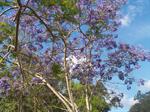
- Further your career in Arboriculture or more broadly, Horticulture
- Start a an Arboriculture business or become a consultant
- Improve your capacity to identify trees and determine treatments for their care and maintenance
Lesson Structure
There are 7 lessons in this course:
- Planting Techniques
Soil, Water, Climate, Maintenance, Matching a tree to the site, Local regulations, Plant at the right time, Planting techniques, Plant size and age, Container type, Buying a tree, How to plant a tree, Watering method, Transplanting a large tree, Preparing for transplanting, After care, small feature trees, Transplanting deciduous trees, Pruning at planting, Pocket planting, Slope serration, Wattling, Planting on Arid sites, Direct or aqua seeding
- Controlling Plant Problems
Temperature, Frost, Winds, Acclimatisation, Tree guards, Other Tree Problems (Fire damage, Fire Resistant trees, pollution and toxic reactions, Soil contamination, Treating foliage burn, Soil rehabilitation, Trees to extract soil contaminants, Soil chemical composition, Air pollution and tree growth, pollutant tolerant trees, Pollution intolerant trees, Trees to control Urban air pollution, Dry soils, Symptoms of drought stressed trees, Dry soil tolerant trees, Trees for hot sites, Drainage problems and trees, Wet tolerant trees, Tree health problems, Resistant plant species, Choosing and using pesticides safely, Biological controls of pest and disease, Life cycles, Tree termites, Tree injections, Tree nutrition and nutrition management, Fertilisers
- Strengthening Weak Trees
Trimming, Trimming technique, Adverse responses to trimming, thinning, Bracing, temporary props, Modern bracing systems, Bolting, Rodding technique, Guy wires, How strong is dead wood, Cabling
- Controlling Damage Caused by Plants
Tree damage, Tree root problems, trees that can cause problems with drains, precautions with drains, Selecting and using trees near drains, Limiting root problems, Root pruning, Trees and the water table (Aquafers), Trees and power lines, Poisonous trees,
- Tree Felling and Stump Removal
Tree evaluation systems, Calculating tree value, Tree removal, Why remove a tree, Tree felling methods, Axe, Saws, Winches, Chain saw, Controlling the fall, Different methods or removing stumps, Protecting trees, National Tree registers, Measuring tree height, Keeping a work site safe, risk assessment, Duty of care, Costing jobs,
- Tolerant Plant Species
What to plant where, Tree data required, Influence of trees on buildings, Species suitability, Planning considerations, Harsh environments, frost protection, Frost resistant trees, Sun protection, Mulching, Fencing, wind protection, Wind tolerant trees, Soil degradation, Saline tolerant trees, Lime tolerance, Acid tolerance, Hardy trees for inner city, Review of several major genera (Acer, Fraxinus, Pinus, Quercus.,
- Establishing a Tree Plantation
Windbreaks, Windbreak design, Choosing windbreak species, Designing tree plantations, Producing drawings to scale.
Each lesson culminates in an assignment which is submitted to the school, marked by the school's tutors and returned to you with any relevant suggestions, comments, and if necessary, extra reading.
Aims
- Explain how to plant a specified advanced-sized tree on a specific site.
- Explain tree injection, including the technique and applications.
- Identify situations where trees require strengthening operations to be carried out.
- Compare different ways to control roots which invade underground pipes.
- Calculate the cost of removing a specified tree.
- Determine appropriate tree species suited to a specific site visited and analysed.
- Devise a method for removing a tree, including tree felling and stump removal.
- Analyse specimens of mature trees, from different genera, to detect any patterns in problems occurring in those trees.
- Develop criteria for the establishment of a tree plantation on a specific site which addresses; site restrictions, cost and function.
Tips for Dealing with Tree Problems
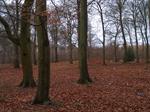 Trees can develop all sorts of problems, and because they are often out of sight – in the roots, up in the tree canopy or even inside the tree itself –it’s all too easy not to notice them until the problem has become very significant. In some cases, treatment is fairly straightforward – perhaps removing a diseased limb, or improving the drainage around the tree. In other cases, you may need to contact a tree expert to carry out specialised remedial work.
Trees can develop all sorts of problems, and because they are often out of sight – in the roots, up in the tree canopy or even inside the tree itself –it’s all too easy not to notice them until the problem has become very significant. In some cases, treatment is fairly straightforward – perhaps removing a diseased limb, or improving the drainage around the tree. In other cases, you may need to contact a tree expert to carry out specialised remedial work.
Identifying the Problem
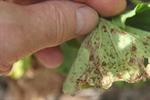 A healthy tree rarely suffers from pest and disease attack. A few chewed leaves or small amounts of sap oozing from the bark are normal occurrences – generally the tree has its own defence mechanisms and will be able to deal with the problem. More severe problems indicate that the tree is stressed in other ways, so have a look at how well the tree is growing (ie. is it suffering from lack of nutrients, is there a drainage problem, is it exposed to too much wind, etc?) before you reach for the sprayer or pruning saw. Good growing conditions (ie. adequate water, fertilisers, soil aeration, protection from sun/wind/frost) are fundamental to helping the tree overcome pest and disease attack.
A healthy tree rarely suffers from pest and disease attack. A few chewed leaves or small amounts of sap oozing from the bark are normal occurrences – generally the tree has its own defence mechanisms and will be able to deal with the problem. More severe problems indicate that the tree is stressed in other ways, so have a look at how well the tree is growing (ie. is it suffering from lack of nutrients, is there a drainage problem, is it exposed to too much wind, etc?) before you reach for the sprayer or pruning saw. Good growing conditions (ie. adequate water, fertilisers, soil aeration, protection from sun/wind/frost) are fundamental to helping the tree overcome pest and disease attack.
What are the Symptoms?
Unless you can see an obvious insect infestation, you will need to have a really close look at the leaves, bark and stems:
- Chewed leaves, buds and twigs – caused by many different types of caterpillars and beetles. Depending on the insect, the leaves may be chewed from the edges; the leaf tissue may be skeletonised, leaving a network of dead veins; or the inside of the tissue may be eaten, forming tunnels or blisters in the leaf surface.
- Discoloured leaves – mottled leaves can be caused by viruses or sap-sucking insects; powdery or sticky coating on leaves, leaf spots and blemishes are caused by various types of fungus (eg. rust, sooty mould, powdery mildew); burnt or scorched leaves indicate heat or water stress; black leaves in winter indicate frost burn.
- Distorted leaves and shoots – insect attack, fungal diseases and viruses
- Leaf drop – many causes including frost, water/heat stress, root damage, insects and diseases
- Sawdust and webs in the trunk and branches – wood boring caterpillars
- Dieback of limbs – long term stress from repeated insect infestations, mistletoe attack, physical damage to roots and limbs
- Galls – lumpy growths on leaves and stems caused by gall wasps, psyllids and fungi
- Fungal growths – including clusters of honey-coloured toadstools growing at the base of the tree, caused by Armillaria root fungus
How to Deal with (selected) Common Tree Problems
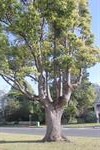 The most common tree problems are:
The most common tree problems are:
Pests, including leaf chewing and sap sucking insects.
Beetles – There are many types of beetles which attack leaves and bark of trees. Chewed leaves are the most obvious sign of beetle attack. Eucalypts are especially prone to attack from the longicorn beetle. They rarely attack healthy trees so improving overall tree health is the best deterrent. Heavy and repeated infestations will result in defoliated leaves, ringbarking of branches, and dieback of limbs. Injecting the trunk with pesticide can help, providing the beetles haven’t already moved away.
Aphids –Very small sap-sucking insects which attack a wide range of garden plants including trees. Shoots and leaves may become distorted and covered with a sooty mould fungus which feeds on the sap. High pressure hosing may dislodge the aphids, or spray with malathion.
Thrips – Tiny, sap-sucking insects which cause yellow leaf mottling and leaf drop. High pressure hosing or in severe cases, spray with malathion.
Leaf miners and skeletonisers – Various leaf chewing insects that chew tunnels or skeletonise the leaf. Spray with white oil or lebaycid.
Moths – The larval or caterpillar stage of many moth species attack a wide range of trees, including eucalypts. Physically remove smaller infestations (wear gloves because many hairy caterpillars can cause skin irritations) or spray with malathion
Psyllids (lerps) – Sap-sucking insects which attack eucalypts, causing leaf discolouration and leaf drop. Often develop a hard covering called a ‘lerp’ which appears as a lump on the leaf. Infestations can be very heavy and difficult to treat but spraying with malathion can help.
Sawflies – Commonly called ‘spitfires’, sawfly larvae gather in large clumps on eucalypts. They can quickly defoliate branches. Remove by hand (wearing gloves) or spray with pyrethrum.
Fungal diseases
Sooty mould – A black powdery coating on the undersides of leaves and trunks, commonly on citrus, pittosporums and eucalypts. Caused by sap-sucking scale insects which secrete the ‘honeydew’ on which the fungus grows. Ants feed on the honeydew, and spread the fungal spores. Treat by removing the scale and ants (either by hand or spraying with white oil and malathion).
Parasites – Mistletoe is a plant parasite which attacks a range of introduced and native trees, especially eucalypts. The leaves resemble the leaves of the host tree, so it can take a while to notice the infestation. It causes die back of limbs and eventual tree death. The most effective treatment is to cut the mistletoe out at the point of attachment.
Viruses – There are many different types of viruses which attack trees. Symptoms include leaf mottling and striping, distorted leaves and shoots and stunted growth. Control is difficult – the recommended treatment is generally to remove the tree and burn infected tissue.
Exposure to heat, wind, frost – Depending on the species and the location, protecting trees from physical stresses such as too much wind, heat and frost will significantly improve tree growth. Windbreaks, covering small trees during frosty periods, and extra watering and mulching in summer will help.
Soil – Good soil health is critical for tree growth. Problems with soil drainage, fertility and aeration will affect the tree. If possible, install drainage pipes nearby (don’t disturb the tree roots though). Mulch the tree (but don’t place the mulch directly in contact with the trunk as this will cause stem rot), and apply fertilisers.
Damage – from machinery, storms, animals. Damage to tree roots can be difficult to identify because it can take several weeks or even months before the tree shows signs of stress (leaf drop, dieback of limbs). If the tree is near a fence line, the root damage could have occurred on your neighbour’s property.
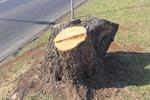 What Makes a Reliable Tree Expert
What Makes a Reliable Tree Expert
THE DIFFERENCE BETWEEN Arborists and Tree Fellers/Loppers
Tree fellers/loppers, as the name implies, concentrate on the removal or lopping of trees (e.g. to keep them clear of power lines, to remove dangerous limbs or trees). Arborists deal with the overall care and maintenance of trees, including specialised tree pruning (including shaping, thinning, removing damaged and diseased wood), pest and disease control, fertilising, technical procedures such as bracing and cabling weak limbs, and transplanting mature and valuable trees. hey will be able to give you a written report, outlining the problems, proposed treatments, expected time frame, and costs.
If you want to get rid of a tree, an experienced tree lopper should be able to carry out the job in a safe and competent manner. However, if your tree requires more specialised work, you should contact an arborist.
A professional tree expert will:
- belong to a industry or professional association, such as an Arborists Association or Institute of Horticulture. Membership of industry or professional associations indicates that the person has a relevant qualification, technical expertise, and a commitment to the association’s code of ethics/conduct. If a dispute occurs, the association will have an arbitration process in place to resolve the problem.
- have completed credible training with industry professionals (formal or informal doesn't matter, but it should be substantial. It takes years of learning to know arboriculture properly.
- have at least five years experience in the industry.
- have sufficient public liability insurance.
- follow safe working practices. They should have sufficient ground staff and equipment to minimise damage to the tree and surrounding property.